If you lived in a northern state at one time or another, maybe you have a little strawberry patch in your backyard. After your last harvest and before the first frost, you would take some straw or a load of grass clippings and cover your berry plants. Come springtime, you could uncover the plants and another season of fresh summer berries would commence. In Florida, however, the summers are too harsh for strawberry plants. The heat and continuous wet weather causes lots of mold problems for strawberry plants, so it is not beneficial for farmers to make the investment and grow strawberries during the summer. So, where do all those Florida berry plants come from?
Each fall, Florida strawberry growers start receiving bare-root strawberry plants from Canada and North Carolina. It is a labor-some task and takes several weeks for the entire planting process. First, lands need to be leveled. Then mounds are built and covered in plastic mulch. Each mound end is sealed and fumigants are injected to kill off any bacteria, fungus, etc. After a couple of weeks, the serious planting begins. Strawberry plants in Florida fields have to be planted by hand. First holes are punched into the plastic mounds and then the bare-root plants are inserted. Once all the plants are in, the overhead irrigation starts. It takes about two weeks of watering everyday for the plants to become established. Come November the first berries are ready to harvest.
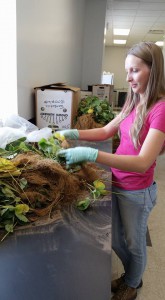
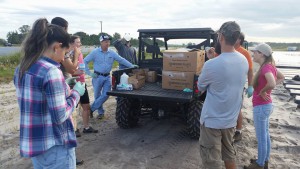
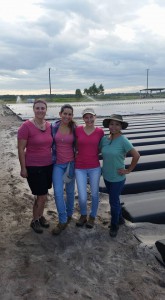
Hillsborough County and a few surrounding counties have a unique micro-climate from October to March and it is in these areas strawberries thrive all winter long. Growers can get top dollar for strawberries, especially during the holiday season, sometimes up to $45 per flat. Once March rolls around, however, the flats can be found at roadside stands for as little as $5-10. This is when many growers change their fields to U-pick, and those willing to spend an hour or so picking can get 4 quarts for a couple of dollars. It is back breaking work and if you ever have the chance to pick berries for any length of time, you would grow a new appreciation for the hundreds of migrant workers that do this everyday.
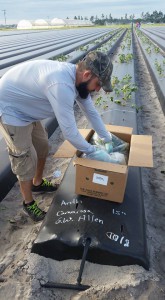
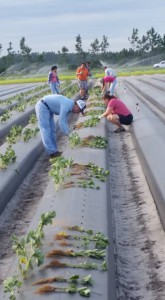
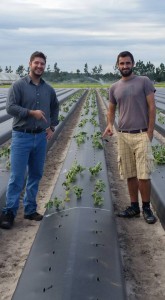
At the University of Florida/IFAS Gulf Coast Research Center, our dedicated employees along with inmates from a local state facility have been hard at work these past few weeks planting. Each program – Horticulture – both cultural management and breeding, Weed Science, Plant Pathology and Entomology have their own plots and will be conducting research until early April. These photos show our Plant Pathology team working to get all the plants in the ground. We grow numerous varieties in our fields including UF varieties developed here at our center along with some UC Davis varieties as well.
You might wonder what we do with all those strawberries. As a non-profit, we are not allowed to sell any of the fruits and vegetables we grow at the center. They do not go to waste, however. Our faculty and staff are lucky enough to be able to take flats home each season. We also have a team of volunteers that pick the excess fruit and deliver it to women’s shelters and children’s homes in the area. We encourage school groups and senior citizen groups to come to the center during the peak harvesting months of January through March for tours and let them pick berries to take home, always a highlight for young and old alike. Our front office staff slices up berries for Valentines Day strawberry shortcake party and we freeze several bags to save for summer smoothies for the staff.
 0
0
